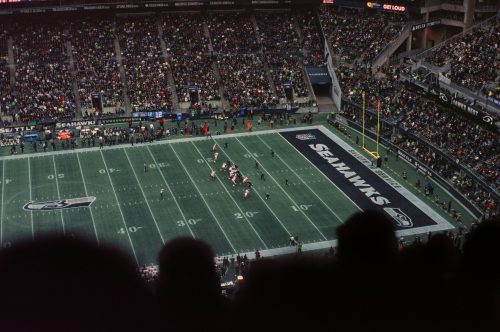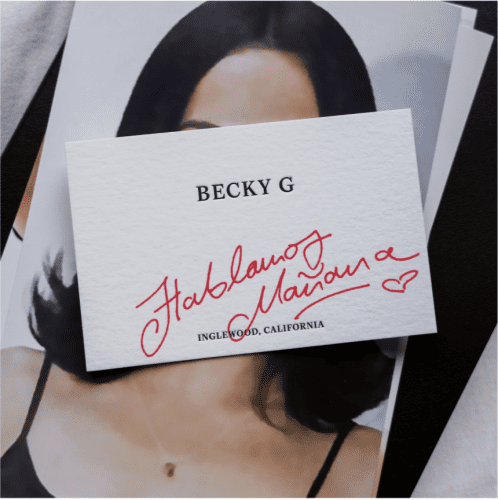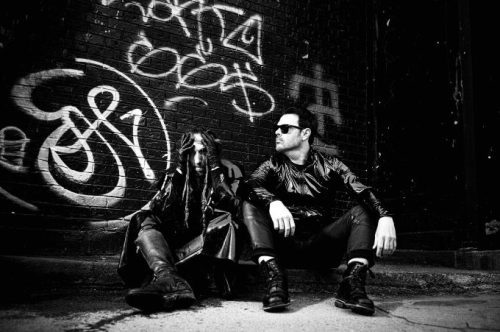Okay, first off we know what you’re thinking and we agree; there couldn’t be a snobbier name for a genre than Intelligent Dance Music. This guide is designed to explain what exactly makes an electronic song “intelligent dance music,” or IDM for short. That said, there isn’t a reliable way to explain what 90’s hipsters meant when they started using this term.
IDM fits into the spectrum of electronic genres more as a new way of saying “Experimental.” Sub-genres of IDM can often vary significantly, and its this chaotic mix of inspiration, music theory and metamorphosing that defines the term. So we can’t tell you exactly what IDM is, but we can start with the first genre to receive the alias.

Aphex Twin, the DJ/musician frequently accused of starting this whole mess, via @aphextwinfamily on Instagram
Ambient Techno – aka Intelligent Techno, IDM
Early 90’s to present
It’s all Techno’s fault, really. The first genre called IDM was the spring-off synergy “Ambient Techno,” but it’s definitely not the last either. There’s not really anything explicitly impressive about Ambient Techno either, to be honest, which further reveals how silly the term “IDM” is at its core.
This is a genre that attempts to blend – you guessed it – Ambient and Techno. That said, it doesn’t really appeal to either of those labels in retrospect. Apparently the average DJ’s idea of Ambient Techno is to put atmospheric synths over a soft 120-130 BPM beat and call it a day. That’s not to say there’s no good songs under this genre, though. It’s just more of a remark of IDM’s humble beginnings.
It doesn’t take long for things to kick up a notch.
Braindance
Mid 90’s to present
This is the perfect genre for anyone who wishes their dance floor experience was a little more confusing and twitchy; which is not many people as it turns out. Indeed the main appeal for Braindance ended up being a “critical listening” community.
Braindance is like a buffet for music theory nerds. Almost all EDM in the scene is restricted to some very simple, Western constraints. For instance, dance music defaults (like most genres, to be fair) to a 4/4 time signature. This means four beats in a measure, whereas 5/4 would mean five. Meanwhile, most songs also stick to a twelve-note major or minor scale.
Odd time signatures combined with unconventional scales and microtones become the bread and butter of IDM in the future. Braindance tracks don’t always possess these unusual qualities, but the music theory eggshell cracks on two ends, and the other is Drill n Bass.
Drill n Bass (aka Jungle IDM), and it’s Feral Successor, Breakcore
Drill n Bass: Mid 90’s
Breakcore: Late 90’s
The spine of IDM today boils down to inhumanly complex drum patterns, and we can thank Drill n Bass for that. With breaks and beats subdividing even into the 64th’s, this is a genre basically taking Drum n Bass and slicing it into angry little pieces. And it really worked for a while. That was until regular DnB artists retributed the inspiration and just incorporated Drill n Bass aspects back into their genres.
On top of this, Drill n Bass isn’t necessarily as “intelligent” as it is aggressive and sharp, like white noise flavored ice cream in the middle of winter. You can’t discredit the genre, however, as it is a bridge to something either far worse or greater, depending on your taste in music.
ENTER BREAKCORE
Breakcore (aka Raggacore, J-Core) is the culmination of thrash, hardcore, Drill n Bass, and IDM. It is a genre of machine sounds, pain, and robotic complexity. To many, it is the last thing they want to hear in their day. But for a select few, this sub-genre of IDM is the brain-scratcher they’ve been waiting for; and they’re crazy bastards for it, too (speaking as one of them).
Artists that make Breakcore music include Machine Girl, Igorrr and Death Grips. Elements of the sound include an overdose of Amen breaks, unerring furious drums, arpeggiating synths, and hip-hop/metal styled instrumentation and sample work. If this all sounds like too much for you, though, there’s no need to worry. Hip-hop took a firm hold on IDM, and a “cooler,” less edgy cousin to Breakcore also sprouted around the same time.
Glitch Hop – aka Wonky
Early 2000’s
Next to Electronica, Djent, and several other mundane genres that appeared in the 21st century, Glitch Hop is looking pretty dope. You’ve almost definitely heard some Glitch Hop before if you’re an EDM head; hell you probably mistook it for Trap or Dubstep too. This is especially attributed to the fact that Brostep, for one, progressively continues to sound more and more like Glitch music.
In actuality, Glitch Hop itself can be a multitude of things. Tracks have been known to take sounds from Dub, DnB and RnB, and those are just a few. The general motif nonetheless is hip-hop with glitchy aspects, like lagging or skipping samples and modulating effects. It’s hard to dislike this genre because it buries all the snobbiness of IDM in a comprehensible yet sophisticated groove that’s ideal for a festival or club.
We’ve also had a few Glitch Hop tracks on our Fresh Drops playlist. The most recent IDM track at the time of writing this is components by voljum. You can peep this amazing jazz and contemporary-blending mix as well as tons of other Bass and EDM bangers we handpick weekly.
Intelligent Dance Music’s Boundless Potentiality
That’s not the end for IDM, either. Like we said at the start of this article, there is no one way to explain IDM because it just refers to boundary-breaking electronic music. There are artists with music and shows going on right now that don’t fit into the genres above. Names like Iglooghost, Culprate, and Seppa are just a few to note that have practically breached into their own genres. So keep an eye out, the next EDM trend could be pretty damn weird, especially if it’s IDM instead.
This guide was inspired and partially sourced by Ishkur’s Guide to Electronic Music
Check out the Respect My Region Fresh Drops Playlist on Spotify
RAPPER WEED: WHICH RAPPERS HAVE CANNABIS PRODUCTS IN THE MARKET?
10 UNDERRATED FEMALE RAPPERS YOU SHOULD LISTEN TO RIGHT NOW
9 RAPPERS FROM DETROIT YOU NEED TO KNOW THIS YEAR








